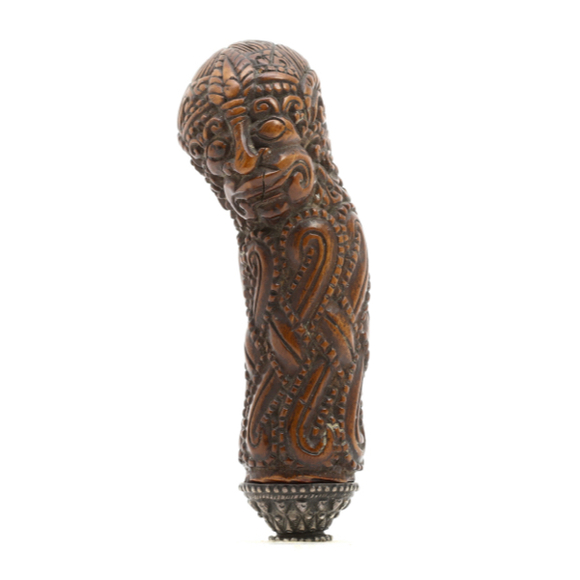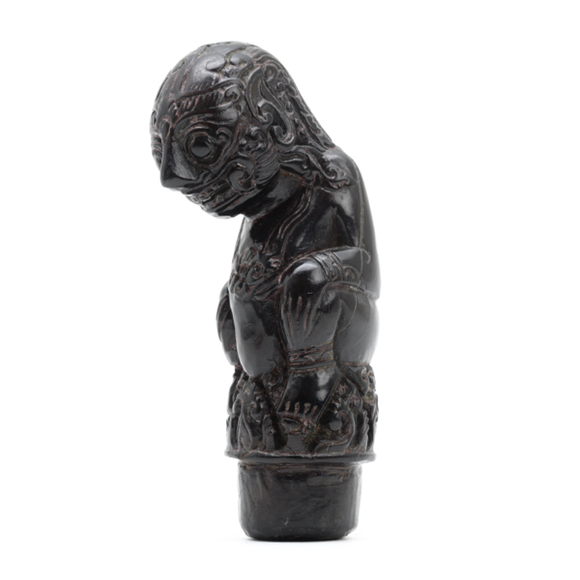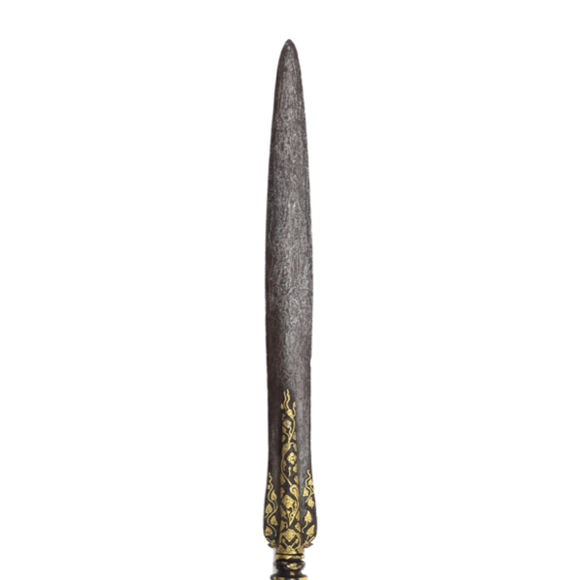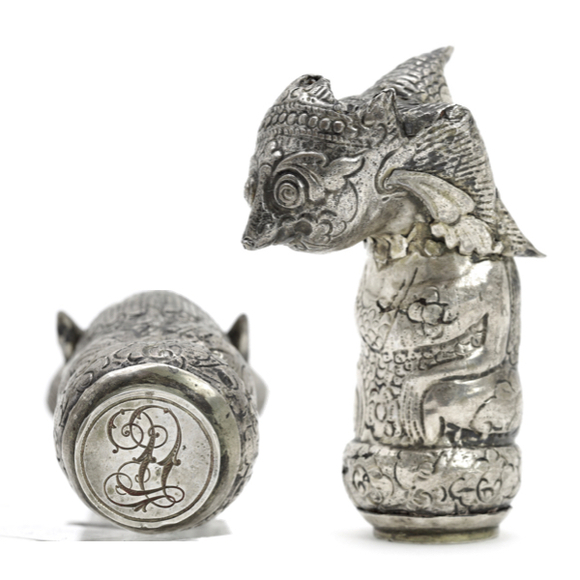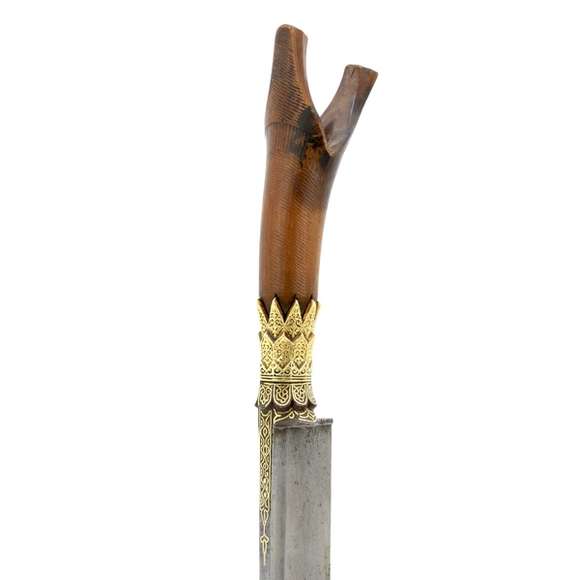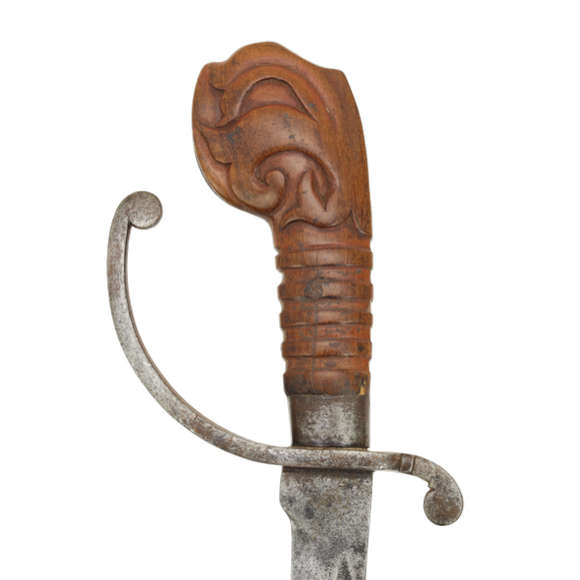19th century, probably originating from Cirebon.

92 x 62 mm
Silver with remains of gilding
Tangerang, West Java
Indonesia
19th century
Introduction
The Peranakan or “Straits Chinese” are descendants of Chinese settlers throughout Maritime Southeast Asia who, mixed with local cultural elements formed a very own distinct culture. In West Java, wealthy Peranakan women often wore a specific type of belt buckle called pending. These pending had two main varieties, the smooth pending polos and the pending poohwa which were adorned with small figures and plants that were soldered on.1
Notes to introduction
1. J.E. Jasper en Mas Pirngadie; De inlandsche kunstnijverheid in Nederlandsch Indië. ‘s-Gravenhage, Mouton & co., 1912-1916. Page 211.
This buckle
A very finely made belt buckle, of the more elaborate pending poohwa type. The entire surface is covered with branches with leaves, small human figures, a variety of birds, and I spotted a turtle. The work is so small that it is hard to make out the individual elements with the naked eye. On the inside are two loops.
There is an old collection inventory number, “B55, No 81” written in black.
Attributions
This exact style of belt buckles was produced in Tangerang, located just West of Batavia, now Jakarta.1
From Jasper & Pirngadie;
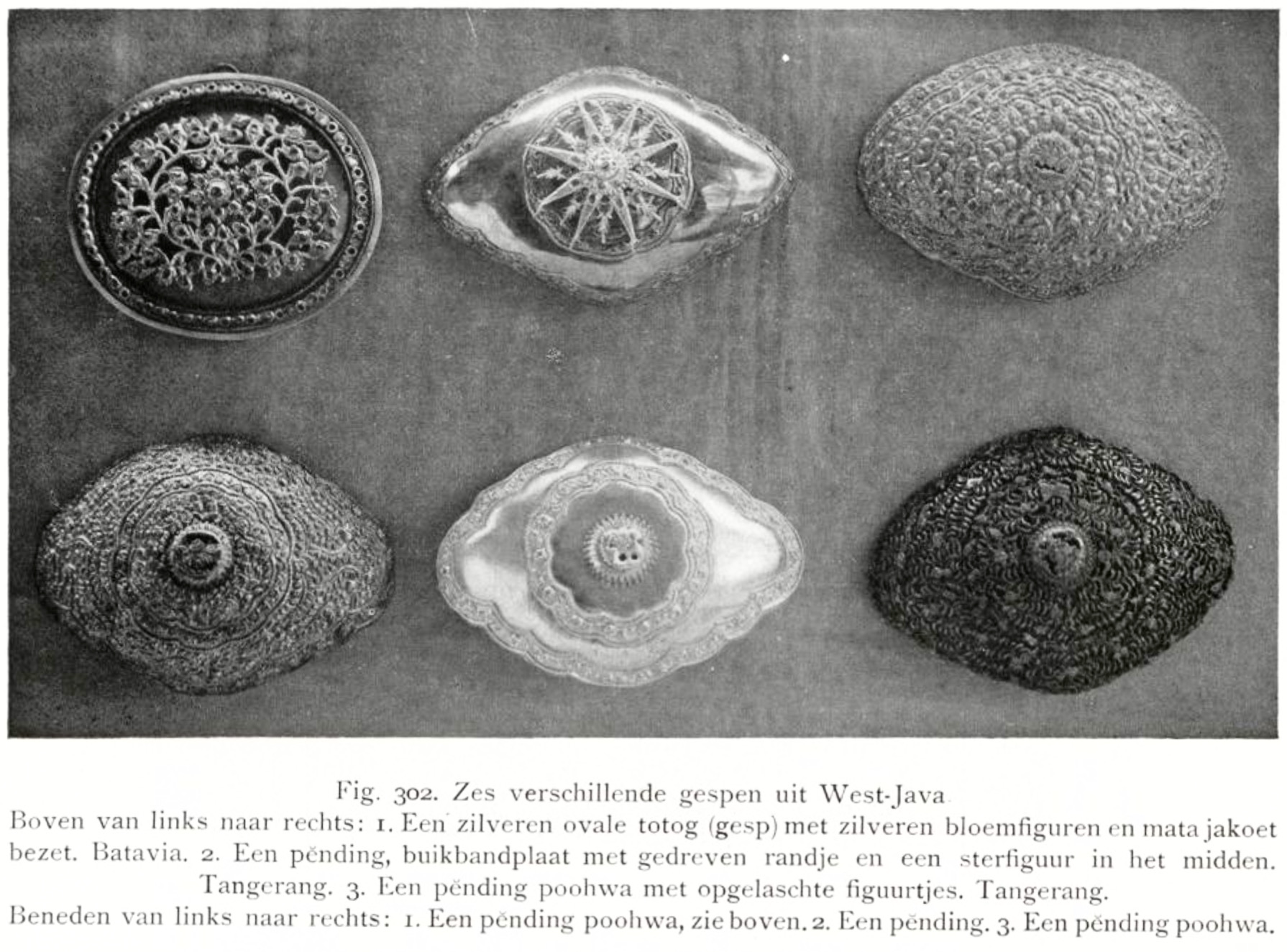
My translation:
"Fig. 302. Six different buckles from West-Java
Upper, left to right: 1. A silver oval totog (buckle) with silver flower decoration, and beset with mata jakut (false diamonds). Batavia. 2. A pending, bellyband plate with repousse border and star in the center. Tangerang. 3. A pending poohwa with figures soldered on. Tangerang.
Lower, left to right: 1. A pending poohwa, like former. 2. A pending. 3. A pending poohwa."

My translation:
"Fig. 303. A pending poohwa of red pickled silver with figures applied by soldering.
Originating from Tangerang."
Examples in museums
Amsterdam Tropenmuseum accession numbers TM-2160-233, TM-4986-63, and TM-2160-232.
Notes
1. J.E. Jasper en Mas Pirngadie; De inlandsche kunstnijverheid in Nederlandsch Indië. ‘s-Gravenhage, Mouton & co., 1912-1916. Page 211.



Its blade with very fine and complex pamor, brought out by a polish.

